Another Timbre TimHarrisonbre
Brian Olewnick’s reviews of the Canadian Series CDs
On his excellent blog Just Outside the music writer Brian Olewnick wrote a series of four beautiful reviews of the second batch of Canadian Series CDs. The reviews are below:
Review of Cassandra Miller’s ‘O Zomer!’ And ‘Just So’
The second installment of the Simon Reynell-curated Canadian Composers Series has arrived and it's a rich batch of work. Two of the releases contain the amazing music of the currently London-based composer Cassandra Miller, the first two recordings devoted to her work, as near as I can determine. Long overdue, I'd have to say.
Miller's music is absorbing for any number of reasons. She makes use of aspects of various branches of modernism including minimalism and, in some pieces, a kind of structural stasis but almost always also references traditional forms and techniques, from Bach to folk songs to Ives and more. 'Just So' collects four pieces for string quartet, performed in typically beautiful and rigorous fashion by the Bozzini Quartet, two shorter works bracketing two longer ones. The title composition is a lilting affair, recalling some kind of village gig or reel, the strings pitched high, dancing, the rhythms just this side of irregular, the cello coming in for some wonderful underpinning in the final few moments. A bracing, joyous number to open the set. 'Warblework', as the title implies, concerns itself with birds: three thrushes and a veery. To my ears, not birdsong as much as tracing the paths birds make in flight and very movingly so. The strings swirl and skitter in brief bursts for the Swainson's thrush, alight for a moment, then take off once again while the hermit thrush swoops a bit more, stays lower to the ground and the wood thrush grunts and pushes its way through the underbrush before standing still to survey its surroundings, which are filled with lovely, dry harmonies. The veery, another kind of thrush, does seem to make a doleful call amidst grainy streaks, the calls multiplying, a little anxious as though espied. Here, as in other pieces, Miller makes subtle use of approximately iterated cells of music, a near repetition of clusters that nods to minimalism without ever falling into rote usage--this is an especially fine work.
'About Bach' is the longest work presented here and kind of a centerpiece, illustrating the sort of structural tack that Miller seems to enjoy and that, in a way, she elaborates in her marvelous composition, 'Duet for Cello and Orchestra', commented on below. Here, if I'm not mistaken, one violin (maybe sometimes both?) plays a very highly pitched, seven-note ascending "scale" throughout the piece. Readers with more musical knowledge than I might identify it, but I was reminded, oddly enough, of the scale sung by the lead tenor at the conclusion of Glass' 1979 opera, 'Satyagraha'. It's very poignant in and of itself, gathering strength and weight and, indeed, poignancy as it's repeated again and again. The lower strings, in an almost conversational manner, reflect with phrases that seem obliquely derived from Bach, though with an entirely modern hesitancy and questioning aspect. Toward the end, it attains a clear dimension of solemnity. There's a type of stasis in effect, pinioned by the violin(s) but also enhanced by the general self-similarity of the interposed phrases, though they in fact vary at all times. The sense of overhearing snatches of discussions in a large room pervades, dreamlike. Just a deep, marvelous and affecting work, brilliantly performed. The disc concludes with 'Leaving', another work that appears to have folk song roots, maybe a sea shanty, lolls in place like an old docked boat gently buffeted by small waves. Each of the strings seems to carry a related tune, melding together at times, drifting apart at other moments. It's an immensely satisfying, soft kind of almost-lullaby, a fine ending to a superb recording.
'O Zomer!' also contains four compositions, but for instrumentation ranging from the ensemble Apartment House (on this occasion consisting of Chloe Abbott, trumpet; George Barton, vibraphone; Simon Limbrick, marimba and crotales; Anton Lukoszevieze, cello; James Opstad, double bass; Christopher Redgate, oboe; Heather Roche, bass clarinet; Philip Thomas, piano; and Jack Sheen, conductor) to a piano/whistling duo (Thomas and Clemens Merkel) to solo violin (Mira Benjamin) to full orchestra (the BBC Scottish Symphony Orchestra, conducted by Ilan Volkov). It's yet another astonishing and spectacular set of music.
I get the idea that Miller likes the notion of partitioning her works into parts, often halves, leading the listener down one path of expectations only to offer a surprising (but entirely appropriate) shift. The beginning of the title piece (I discovered that "zomer" is Dutch for summer, but don't know if that's the allusion in play here) displays that idea in a nutshell: eight quick, steady taps of the same note on a marimba (underlaid by a bowed chord by, I think, cello) followed by a held tone of roughly equivalent length, maybe a tad shorter, by...hard to say--a muted trumpet? The marimba gradually slows down, though remaining steady. It's very pure, even pristine, eventually accompanied by single notes from the piano. Suddenly, four minutes in (halfway), the music erupts in a bright, clattering, bleating explosion of sound, extremely colorful, wonderfully arranged, that surges and pulsates for the remainder of the work. Two worlds, the serene and the gorgeously chaotic. 'Philip the Wanderer' opens with low, brooding piano rumbles, the left hand way down there, grumbling, the right stabbing at mid-range notes, almost forcing them out, the entirety bearing an anguished, troubled mien. Again, about halfway through its 14 1/2 minutes, the atmosphere breaks for several seconds. Then, very surprisingly, we here the piano tracing a lovely single-note, halting melody offset by thick, chorale-like chords, very regal though still retaining some of that tortured feeling. More surprising still, and marvelously moving, is the emergence of a whistler (Clemens Merkel, normally the lead violinist of the Bozzini Quartet), limning a sad, wistful tune, low in pitch. He only stays for a minute or so but has imparted an important layer, or several, to the music. After his disappearance, the piano takes on a more joyful guise, cascading raindrops in a higher register, before coalescing around a simple, rising eight note pattern that repeats for a minute or two. 'For Mira' uses kernels of repeated lines, gnarly, stretched and involute with elaborations shooting off like tendrils from a vine. The language is almost Romantic; one can imagine it being formed from shards of cadenzas severed from a late 19th century concerto. The line is fairly long and involved, long enough that one might not realize it's repeating, albeit with short breaks and augmentations. On the whole, it's a keening, wrenching, grinding piece, fraught with longing and desire, extremely heartfelt.
And then we come to 'Duet for Cello and Orchestra'. I'll say at the outset that this is one of my single favorite pieces of music heard over the past several years. We hear Charles Curtis bowing two dark tones, seesawing slowly, growling them out, infused with grain. I was immediately taken back to an event I witnessed several years ago in Paris when Curtis, along with Carol Robinson and Bruno Martinez, performed Éliane Radigue's 'Naldjorlak I, II & III', the first third of which, lasting about 45 minutes, was Curtis playing a single "wolf tone". We were sitting about six feet in front of him and the effect was overwhelmingly powerful. After four iterations of this "simple" pattern, there's a flowering of trumpets, a small, fluttering fanfare that appears, bounces about and ends with a little, humorous curlicue. This form is essentially repeated throughout the first half of the 32-minute work, with both the complexity of the lines and their instrumentation expanding to the full orchestra, the cello maintaining its grim, slow-stepped progression. The orchestral pattern matures into the form of that flutter of arabesques followed by an extended, steady chord, again sometimes ending with that wry flourish. I had the impression of the flocking of three or four different birds, their patterns varying and intersecting, rising from trees, settling. I also sensed a faint allusion to the orchestral parts of Ives' 'The Unanswered Question'. The pure sound color aspect of Miller's writing (and, I suspect, of Volkov's conducting) is an absolute joy, as is tracing the complex but individuated lines; I really can't say enough about how glorious it is. The cello, while maintaining the basic pattern, seems to stretch it out a bit now and then, acquiring a greater sense of dolor, of inevitability. Around that halfway point, the orchestra subsumes the cello entirely (it may be continuing underneath, difficult to tell for sure) but the ensemble has been bent to the solo instrument's will, adopting its back and forth motion, though writ large (glimmers of John Barry's score to 'Moonraker' as reconfigured by Fenn O'Berg spring briefly to mind). The whole conglomeration sways and rocks like an old ark making its slow, steady journey through heavy water. Just when you think that this is the way it's going to end, in an indefinitely cyclic eddy, the music quiets down and we once again hear the cello, buried for the past 10-12 minutes, emerge with a new demeanor, playing an oddly lilting line, high notes, sad but sing-songy, like a lost bird making its way home. The work ends with an ironic iteration of that winking flourish we heard earlier.
Just a phenomenal recording, huge congratulations to all involved. I can't wait to hear more from Miller.
Review of Alex Jang’s ‘momentary encounters’
I believe this is the first physical release from Jang, a Victoria, Canada-based composer (the recording is part of Another Timbre's Canadian Composer Series). It presents four subtle, delicate works, three performed by members of Apartment House and one by the Chilean guitarist, Cristián Alvear.
'momentary encounters (5)' is a lovely piece, played in an exterior environment (Tooting Bec Common, South London) by clarinetist Heather Roche. It's an idea that's been in play for a while but this performance is exceptionally strong. I gather that the instrumentalist doesn't make a "scene" of herself, simply sits and plays in a public space, any intervening noises--truck engines, barking dogs, yelling kids, birds, etc.--occurring more or less without knowledge of her presence. The music is soft and serene--long, hollow tones that easily weave in amongst the environs, tinging them gently. The whole piece evokes a calm, observant state of mind, natural and unforced. Interested listeners may like to hear another version, recorded recently outside of Cafe Oto, London prior to a performance of Jang's music inside. Here, a loud conversation "interrupts" the playing, though whether or not the speakers were aware of Roche's presence is open to question. Either way, it casts the piece in a different and, for me, intriguing light.
The remaining three works are studio recordings. The instrumentation in 'any three players' (here, John Lely, melodica; Simon Limbrick, vibraphone; Anton Lukoszevieze, cello) might remind one of Christian Wolff and the music does as well, at least a bit, with quiet, near-melodic lines slowly dancing about each other, paths interweaving but rarely colliding. It meanders, but I have the sense that's the purpose--slowly wandering, seeing what happens; very satisfying. Alvear performs, solo, 'a gray, bent interior horizon', a sparser work. Slightly muffled notes are plucked at a slow pace, sometimes in regular sequence, sometimes with varied density. It's a fragile piece and I'm not sure there's quite enough there to hold up for its ten minutes, but thoughtful nonetheless; I'd be curious to hear it out in the world, as in the first work. The final track. 'distributed tourism', is played by a quintet (Mira Benjamin, violin; Limbrick, vibraphone; Roche, clarinet; Nancy Ruffer, flute; Lukoszevieze, cello). It's more a clearly composed work than the trio, with overlapping lines, harmonies and somewhat less vague melodic material. And it's gorgeous. Again, an amble is what I think of but here, instead of three walkers on their own (in a common space), there's some teamwork, some mutually agreed upon points of interest and convergence. As with all the music on this disc, the atmosphere is quiet, unassuming but alive with intelligence and perspicacity. Its a 25-minute stroll, well-paced, deftly colored and subtly structured: a joy.
'momentary encounters' is a fine introduction to Jang's music. I'm eager to hear more.
Review of Lance Austin Olsen’s ‘Dark Heart’
Olsen was originally a visual artist and has continued to produce a vast amount of paintings and drawings, some of which have adorned the covers of other Another Timbre releases (it's well worth reading the excellent interview with him at the Another Timbre site for a career overview). So it's not surprising that three of the four works presented here derive from graphic scores, one by Olsen (heard in two realizations) and one by Venezuelan musician Gil Sansón.
'Theseus' Breath' is the piece heard twice, both times by a quartet, each almost ten minutes in duration. The first, interpreted by four members of Apartment House (Mira Benjamin, violin; John Lely, electronics; Simon Limbrick, percussion; Anton Lukoszevieze, cello), is a rough and stormy affair, the strings grating and grumbling, the percussion wooden and clattery, the electronics burbling with a menacing air. One envisions a minotaur lurking on the other side of the maze wall. The range of colors and tones evoked by the quartet are a fine analogue for those seen in Olsen's visual art, for instance that seen on the cover (although an interior image shares the title--perhaps it's the score?). The second version, quite different, is realized by Ryoko Ajama (turntable, melodica), Patrick Farmer (paper, card), Isaiah Ceccarelli (reed organ, percussion) and Katelyn Clark (organetto). While still creating an unsettling aura, there are more held tones via the organs and melodica. This yields an open, if foggy, environment populated by odd chirps, whistles and skittering sounds, that slowly evaporates; very lovely and mysterious, especially the last several minutes.
The source material for the title track derived from recordings sent to Olsen by Norwegian guitarist Terje Paulsen, consisting of both guitar shards and field recordings. Olsen began working with the material in 2013, let it be for a few years, then picked it up again in 2016 to rework it, by that time no longer able to always distinguish between Paulsen's original contributions and his own. The quality of the guitar sounds--liquid, bulbous, globular--makes for a unique element in Olsen's sound world. There's an interesting break after about five minutes at which point one may have been satisfied. When the sounds return, however, we hear piece of old radio theater: Dragnet, if I'm not mistaken. These disembodied voices weave their way through a morass of whines, echoing clangs, deep guitar scratchings, etc. For all the variety of landscape, it strikes me as somewhat steady state, a dark vision of an endless alley. I'm not sure it quite holds together for its length (32 minutes), but it's an gripping enough ride.
A Meditation on the History of Painting' is another story. Along with another work from this Canadian Composers series, Cassandra Miller's 'Duet for Cello and Orchestra', it's one of the single most impressive and absorbing pieces of music I've heard in years. Gil Sansón's graphic score begins with some very loose directions, for instance, "Some sounds can be related to painting, or not" and "Gestures can be smears or can be calligraphic". The images on the 12-page score are a complex sequence of clipped texts (including numerous cash register receipts, laid horizontally, puzzle pieces and, most prominently, smears of paint, from streaked and, frankly, fecal looking to saturated swathes of color):
Olsen, wielding field recordings, amplified copper plate and engraving tools, amplified iron park bench, found recording (wax cylinder), guitar and voice, traces his way through, beginning with exterior sounds, cars and trucks on a wet road, maybe, some chimes, wooden clatter as from a balafon, the noises welling into a large wave, fading after some six minutes and shifting into another world. Here, velvety ringing tones circulate dreamily, their wafting overlaid by what sounds like a sharp instrument tearing through cardboard--it's an intensely sensual juxtaposition, just fantastic. A men's choir emerges (the wax cylinder, I take it), subaqueous and quavering. The scene shifts again, guitar plucking amidst hums and harsher buzzes, sparks and clacks, a slow-motion seesaw. Male voices, vaguely distorted in one way or another, appear in snipped fragments. The volume heightens, the elements acquiring more tension, a disturbing rattle skims back and forth across the stereo spectrum. Finally, a last, quick scratch, like a struck match. Difficult to describe, wondrous to experience.
Yet another very fine entrant in this series, highly recommended.
Review of Linda Catlin Smith’s ‘Wanderer’
This is the third release of Linda Catlin Smith's music on Another Timbre, preceded by two wonderful recordings, 'Dirt Road' (2016) and 'Drifter' (2017). On 'Wanderer', yet another very fine entry into both her and the label's catalogue, we're presented with eight compositions, written from 1990 to 2010, and performed by Apartment House in various configurations ranging from solo to septet plus conductor.
While serenity and a sense of the rural (not necessarily pastoral) pervades Smith's work, the pieces here might not be as immediately ingratiating as those from the prior two albums which, as much as I enjoy those, might be a good thing, evincing an even greater range than I knew (my failing, no doubt). 'Morning Glory' begins with lovely, soft piano arpeggios (Philip Thomas), soon echoed by vibraphone (Simon Limbrick) but when the strings and reeds emerge (Mira Benjamin, violin; Anton Lukoszevieze, cello; Heather Roche, clarinet; Nancy Ruffer, flute; all conducted by Jack Sheen), a certain level of astringency is introduced, a chill breeze. As the piece progresses, it remains unsettling, balancing soothing lines with darker bumps and squiggles, ending in a somber, lushly umbral sequence. Thomas is heard solo on 'Music for John Cage', the earliest-written and shortest track, which begins as a kind of slowed-down processional, steady and light-filled, but ends with unanswered questions. A septet plus conductor (Chloe Abbott, trumpet; Benjamin; George Barton, percussion; Limbrick; James Opstad, double bass; Roche, Thomas and Sheen) tackle 'Stare at the River', the waterway hazy with fog. Long lines from bass and trumpet are offset with delicate cymbals, briefly tinging the piece with a jazz-like aura, perhaps enhanced by the clarinet. This segues into an almost hymn-like sequence atop which the piano plays spare but sparkling chords before eerily fading back into the haze. 'Knotted Silk', played by the same septet, is spikier, with sharp percussive strokes over strings and muted trumpet, burrs in a meadow.
'Sarabande' is a sextet with Benjamin, Limbrick, Lukoszevieze, Roche, Ruffer and Thomas (here on harpsichord). A wafting, dreamy layer of reeds and strings is pricked by the keyboard, like a meandering yet stately dance that now and then slips into unison. Thomas is joined by pianist Philip Knoop for 'Velvet', another dark, probing work, initially recalling Satie from his Rosicrucian period, then floating skyward with a series of ethereal arpeggios, eventually settling gracefully and comfortably to ground--a wonderful piece. The title work, for a quintet of violin, percussion, cello, clarinet and piano also navigates an uncertain terrain, the piano stepping carefully through a skein of quavering lines, tiny bursts of cymbals and deep, soft drums. Finally, there's 'Light and Water', an enchanting vibraphone/cello duet, not negating the preceding uncertainties entirely, but offering some amount of solace, the lowed, bowed cello tones laying to bed the clear, steady vibes before raising their own questions.
A captivating set of very thoughtful compositions, rigorously and empathetically performed by members of Apartment House.
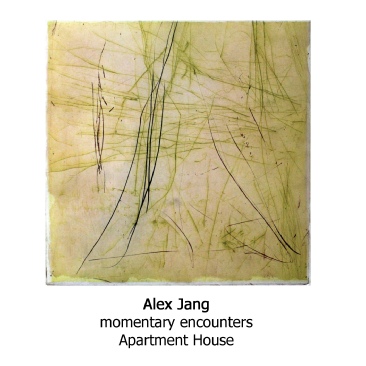
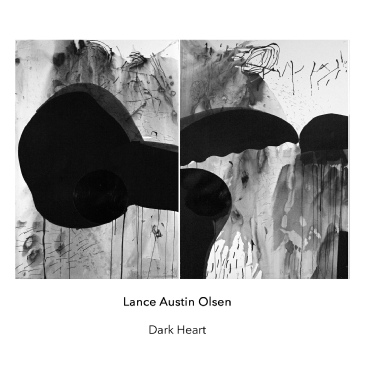
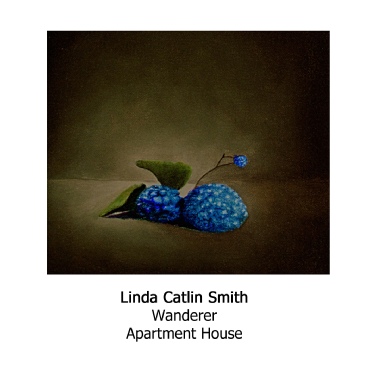
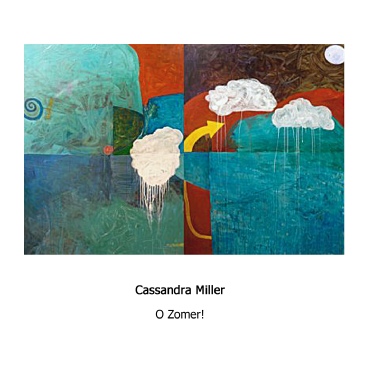
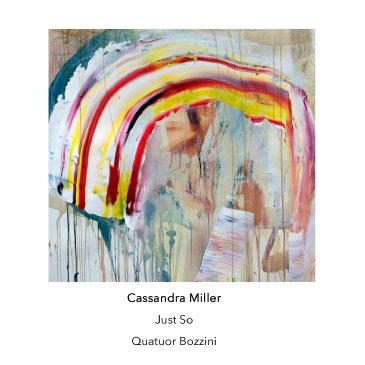
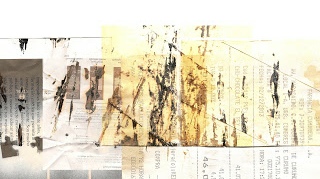
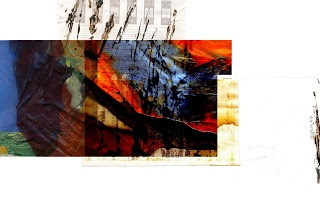
Page from Gil Sanson’s score for Lance Austin Olsen
Page from Gil Sanson’s score for Lance Austin Olsen